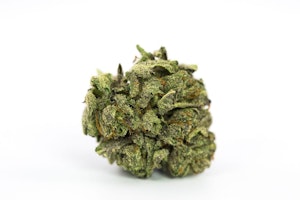
A man smokes a marijuana cigarette as a large group gathered near the New Jersey Statehouse to show their support for legalizing marijuana Saturday, March 21, 2015, in Trenton, N.J. The event drew a diverse crowd of roughly 200 people. Many said they wanted to show their support for legalizing or decriminalizing pot, while others said it should only be given to people with medical conditions that could be eased by the drug. Several people were openly smoking the drug during Saturday’s rally, but apparently none were arrested. (AP Photo/Mel Evans)
The Bizarre History Of Workplace Drug Testing
Ever wondered how workplace drug testing came about? Let's walk you through it.
“Just say no.” These three words became a go-to catchphrase for Nancy Regan, who touted it at schools and public speaking events nationwide.
Nancy’s dedication to keeping kids off drugs was part of a larger campaign pushed by President Ronald Regan and his administration. The campaign was the War on Drugs, a decades-long shit-show targeting drug users, providers, and the substances themselves.
More specifically, it unjustly targeted Black and Hispanic people and underserved communities. The result led to over 1.6 million new drug arrests yearly, the highest incarceration rate worldwide.
By the late 1980s, America’s War on Drugs brought a new era of mandatory drug testing, stop-and-frisk searches, and blatant arrests.
Today, workplace drug testing
The History Of Workplace Drug Testing
Workplace drug testing began in 1986 after the President’s Commission on Organized Crime Report. Instead of focusing on harm reduction or supply-side solutions, the report recommended targeting drug users themselves.
According to the report, public and private sector drug screening were viable tools to control drug use throughout the United States.
Shortly after, President Regan issued Executive Order 12,564, establishing mandatory drug
For the first time in American history, pre-employment drug screening was mandatory in the public sector. The private sector was quick to catch on. By 1987, over one-fifth of large employers had adopted workplace drug testing
Mind you, most of these drug tests were for pre-employment screening, not impairment tests. These numbers are staggering compared to America’s northern neighbor.
In Canada, workplace drug testing
It seems as though workplace drug testing
The Problem With Workplace Drug Testing

Drug policies in the United States are changing slowly but surely. With medical and adult-use cannabis legalization in many states, the number of employers that drug test has declined. But, the problem is still far from solved.
According to a 2018 survey from Human Resource Management, 57% of employers still use workplace drug tests, whether pre-screening or routine testing.
In some cases, workplace drug testing
However, only in the United States are ordinary occupations like retail, librarians, and office workers subject to workplace drug screenings. Here’s why it’s a problem.
Detection Window
The most common drug test is a five-panel urinalysis., better known as the pee test. Five-panel urinalysis tests for the presence of five commonly abused drugs, including:
- THC
- Cocaine
- Amphetamines
- Opiates
- PCP
Here’s the thing—a urine test will not tell you if an employee is currently intoxicated. Instead, a urine test can only tell you if they used a drug sometime in the last three to 30 days, depending on the drug.
Testing positive for drug consumption in a urinalysis does not necessarily indicate that a person is impaired. Nor does it tell you whether or not an employee is unfit to work.
Long detection times make urine tests one of the worst ways to check for impairment. Each substance features its own detection window, which is the amount of time it takes before a drug is no longer detected by a drug test.
Some drugs, like amphetamines, feature a detection window of three to five days after the last consumption. However, marijuana’s detection window is the longest. THC can still be present in your urine from 10 to 30 days after your last consumption, depending on how much and how frequently you consume.
With such long detection windows, workplace urine tests are ultimately flawed.
Constitutionality
Over the past three decades, the constitutionality of workplace drug testing for
The Fourth Amendment is the right to privacy. To be clear, it doesn’t protect against all searches and seizures. Instead, to perform a lawful search and seizure, there needs to be “probable cause.” In order to search for anything, a warrant or obvious violation is required.
But is probable cause evident for pre-employment or routine drug testing? These practices enable testing without any previous complaints.
It is important to note that constitutionality is only in question with public sector jobs. If you work for a private employer, there is no limited protection for your constitutional rights. Instead, by taking a job from a private entity, you agree to the terms set by the employer.
Passing A Workplace Drug Test

Consumers faced with workplace drug testing
An entire industry exists around workplace drug testing.
When your livelihood is on the line, many people will go to great lengths to avoid being penalized for their weekend habits. Some of the most common ways consumers pass workplace drug tests include the following:
Synthetic Urine: Yup, fake pee. It’s a solution to mimic real human urine to fool laboratory tests. Many states have introduced policies to criminalize synthetic urine during urinalysis. Despite the risk, synthetic urine remains one of the most popular ways to pass workplace drug tests. Unlike detox drinks, you don’t have to consume anything to use synthetic urine. Detoxing isn’t necessary when using this method.
Detox Products: That brings us to our next point. Detox products often contain a mix of vitamins, fiber, and herbal supplements, concocted to facilitate detoxification. In some cases, a few detox products work by masking drug metabolites in urine. Others flush the toxins out of your system in a few days, sometimes in one day.
Just Say No: This is a half-joke. Nancy Regan has encouraged us to “just say no” to drugs of all kinds. While it’s in our power to choose whether to use drugs, perhaps the best way to pass a workplace drug test is to steer clear of all drugs. Unless you have a foolproof way of passing it (like synthetic urine), it’s best not to consume drugs before a drug test.
Herb Recommended Products:
READ MORE










